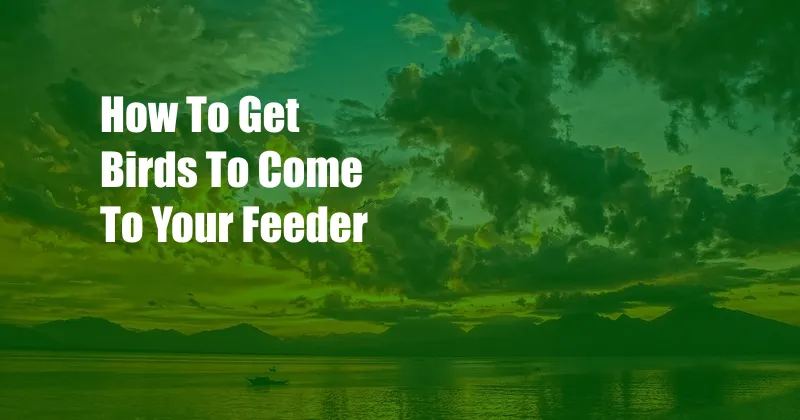
Nurturing Nature’s Visitors: A Guide to Attracting Birds to Your Feeder
As a fervent ornithophile, I’ve found immense joy in establishing a sanctuary in my backyard for feathered friends to gather. The cheerful melodies they fill the air with and their dazzling hues are a constant source of solace. But it wasn’t always this way. Initially, my bird feeder stood empty, a lonely beacon in the wilderness.
But then, I embarked on a journey to understand the intricacies of attracting birds to my feeder. Through arduous research and tireless experimentation, I’ve gathered a wealth of knowledge that I’m eager to share.
Locating Your Feeder: A Haven of Avian Delight
The placement of your bird feeder is paramount in enticing these winged visitors. Select a spot that’s visible from multiple areas of your yard, giving birds a clear view of potential predators. Ensure the feeder is sheltered from harsh weather, like relentless winds or scorching sun, while providing an unobstructed view of the surroundings.
Hang your feeder at an appropriate height, ideally between 5 and 6 feet off the ground. This height offers a compromise between being low enough for smaller birds to access easily and high enough to deter larger, more aggressive species. Additionally, position the feeder away from dense shrubs or trees, which can provide hiding places for predators.
The Allure of Seed: A Culinary Treat for Birds
The type of seed you choose will significantly influence the type of birds you attract. Black-oil sunflower seeds are a versatile option, adored by a wide range of species. Nyjer seeds, also known as thistle seeds, are a favorite of goldfinches, while safflower seeds are preferred by cardinals.
Experiment with different seed blends to determine the preferences of your local avian community. Avoid using seed mixes that contain fillers like milo or corn, as they offer little nutritional value and can discourage birds from visiting your feeder.
A Clean Slate: Sanitation for Avian Health
Maintaining a clean bird feeder is crucial for the health of your feathered visitors. Regularly remove any uneaten seeds, as they can become moldy and attract bacteria. Wash the feeder thoroughly with a mild bleach solution to eliminate any potential pathogens.
Disinfecting your bird feeder every two weeks is recommended, especially during warm, humid weather when bacteria thrive. By keeping your feeder clean, you create a safe and inviting environment for birds.
Beyond Seeds: Culinary Delights for Birds
While seeds form the cornerstone of a bird feeder, you can diversify your offerings to attract an even wider array of species. Suet, a high-fat food source, is particularly popular during colder months. Place suet blocks in a dedicated suet feeder or smear them on the trunk of a tree.
Offer fruit, such as sliced apples or oranges, as a sweet treat. You can also set out small dishes of water, especially during dry spells, to provide essential hydration for your feathered friends.
Expert Insights: Tips from Seasoned Ornithologists
Renowned ornithologist Dr. David Sibley emphasizes the importance of providing multiple feeders with varied seed types. This approach caters to the diverse preferences of different bird species.
Wildlife expert Roger Tory Peterson suggests situating your feeders near natural cover, such as shrubs or trees. This provides birds with a sense of security and a refuge from predators.
FAQs: Unraveling the Mysteries of Bird Feeding
Q: Why are birds not visiting my feeder?
A: The feeder may be empty, dirty, or located in an undesirable spot. Ensure the feeder is stocked, cleaned regularly, and placed in a safe and visible location.
Q: How often should I clean my bird feeder?
A: Every two weeks, especially during warm, humid weather.
Q: What is the best seed to attract birds?
A: Black-oil sunflower seeds are a versatile option, while Nyjer seeds are preferred by goldfinches and safflower seeds by cardinals.
Conclusion: A Symphony of Nature
Creating a welcoming sanctuary for birds in your backyard is a rewarding experience that brings joy and tranquility. By following the tips and advice outlined in this comprehensive guide, you can transform your feeder into a vibrant hub of avian activity.
I encourage you to continue exploring the fascinating world of birdwatching. Engage in online forums, consult field guides, and connect with local bird conservation organizations to deepen your knowledge and contribute to the preservation of these enchanting creatures.